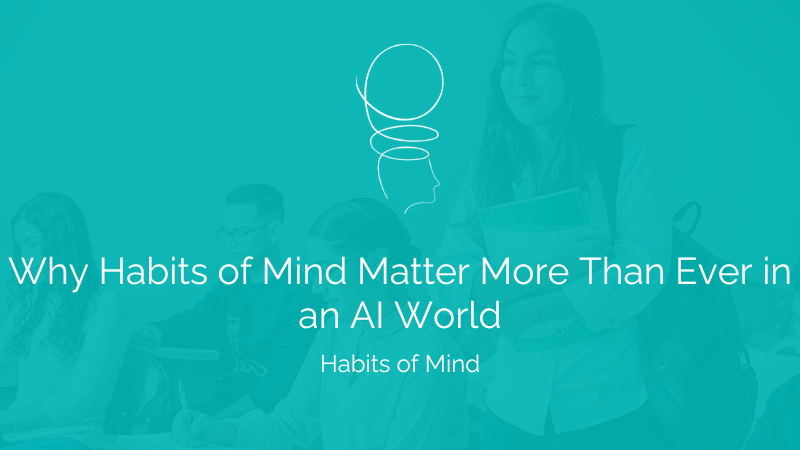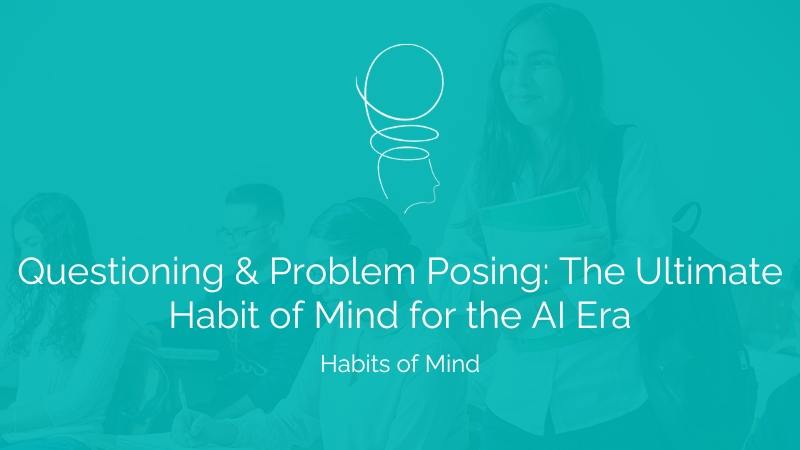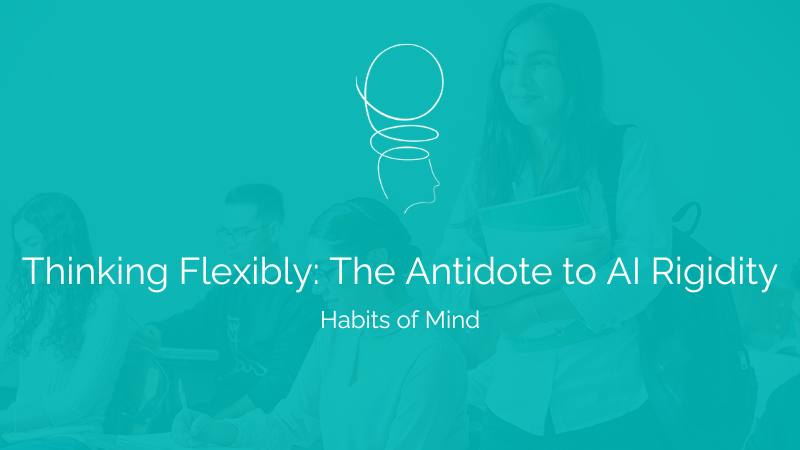Throughout this series, we’ve explored how several critical Habits of Mind—Questioning, Thinking Flexibly, and Metacognition—take on new significance in an AI-integrated educational landscape. But what does this mean for us as educators? How does this shift our professional identity and practice?
As someone who has worked with schools on learning frameworks for over two decades, I believe we’re experiencing not just a technological revolution but a fundamental redefinition of what it means to teach.
From Content Delivery to Habit Formation
The most profound shift I’m observing in forward-thinking schools is moving from a content-centered to a habit-centered approach to teaching. When content knowledge is increasingly AI-accessible, our primary value lies in developing the thinking habits that determine how students approach learning itself.
This directly connects to what I’ve long advocated in my Learnership framework—the expertise a person develops in learning. As one principal recently told me after a workshop: “We used to think we were teaching subjects to students. Now we realize we’re teaching students to think through subjects.”
The Three Roles of the AI-Era Teacher
In my work with schools, I’ve started discussing three essential roles for teachers in this new landscape:
- The Habit Architect: Deliberately designing learning experiences that strengthen specific Habits of Mind
- The AI-Integration Guide: Helping students use AI effectively while maintaining their thinking independence
- The Learning Coach: Providing the metacognitive guidance that AI cannot offer
None of these roles can be replaced by AI, and all become more important as AI handles routine instructional tasks.
Practical Next Steps for Teachers
For educators asking “Where do we go from here?”, I suggest these practical approaches:
Problem-Centered Unit Design: Begin planning units by creating problems and identifying which Habits of Mind you want to strengthen, then design learning experiences accordingly.
AI-Integrated Assessment: Redesign assessments to evaluate not just what students know, but how they think with and without AI assistance.
Thinking Visibility Practice: Implement regular routines that make student thinking visible and discussable.
Metacognitive Reflection Systems: Establish structured ways for students to reflect on their learning processes, not just their learning outcomes.
Collaborative Habit Development: Create professional learning communities focused on how specific Habits of Mind manifest in different subject areas.
The Problem-Solving Super Powers Advantage
In my Problem-Solving Super Powers workshops, we dive deep into how to implement these approaches in practical, classroom-ready ways. We explore how to make Habits of Mind the central organizing principle of learning experiences rather than an add-on.
The workshop provides a framework for reimagining teaching in an AI world—shifting focus from what information students acquire to what thinking capabilities they develop.
The Ultimate Learning Advantage
As AI continues to transform education, the ultimate advantage we can give our students isn’t technical knowledge that will quickly become outdated. It’s the development of those powerful Habits of Mind that will serve them in any future context—the ability to persist through challenges, think flexibly, question assumptions, and reflect on their own thinking.
This is what I call the Learning Advantage—the expertise in learning that enables success regardless of how content knowledge and technological tools evolve.
How are you reimagining your teaching role in response to AI? What Habits of Mind do you believe will be most crucial for your students’ futures? I’d love to continue this conversation in the comments.



